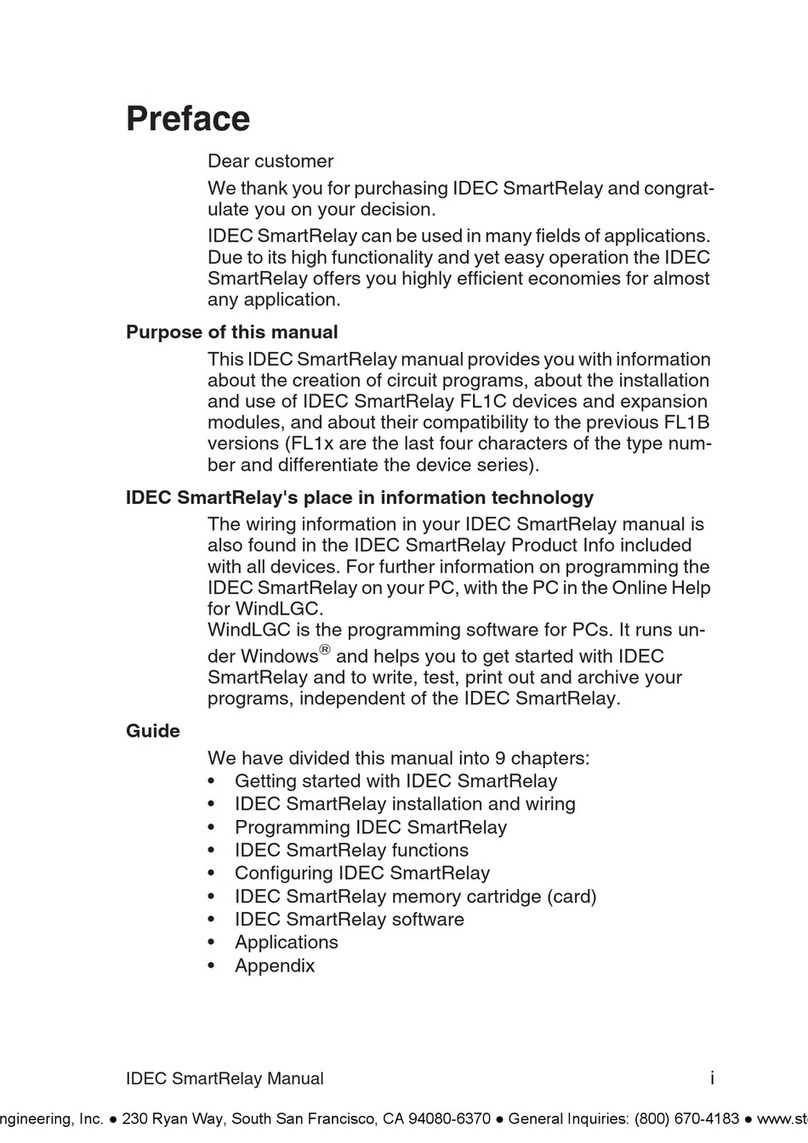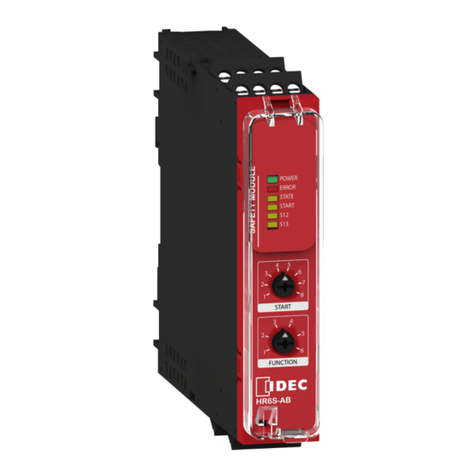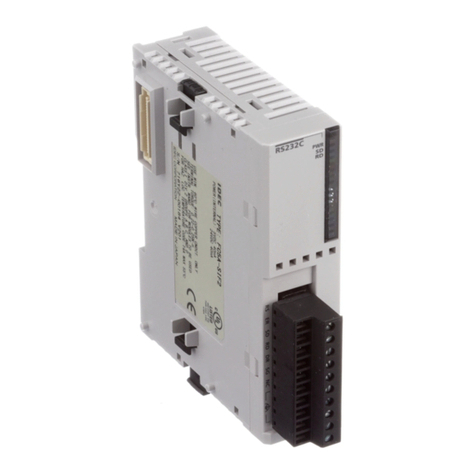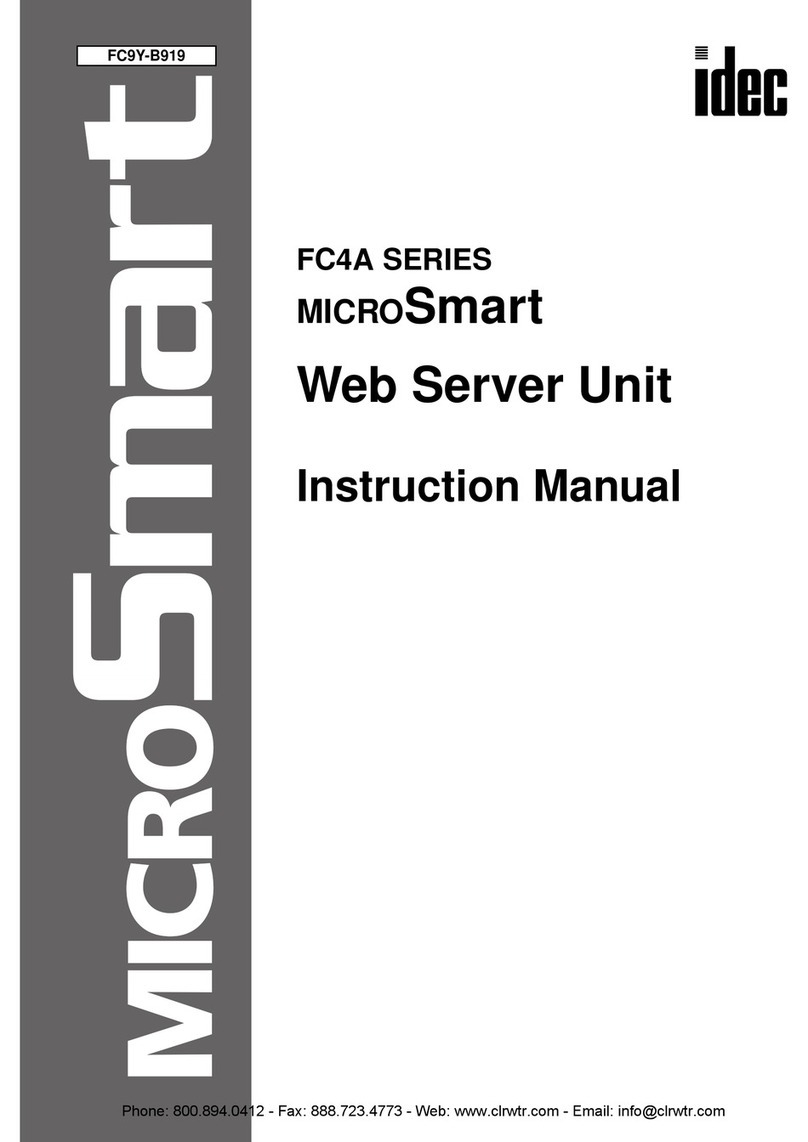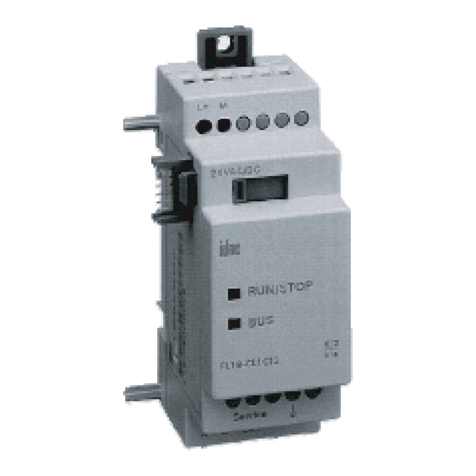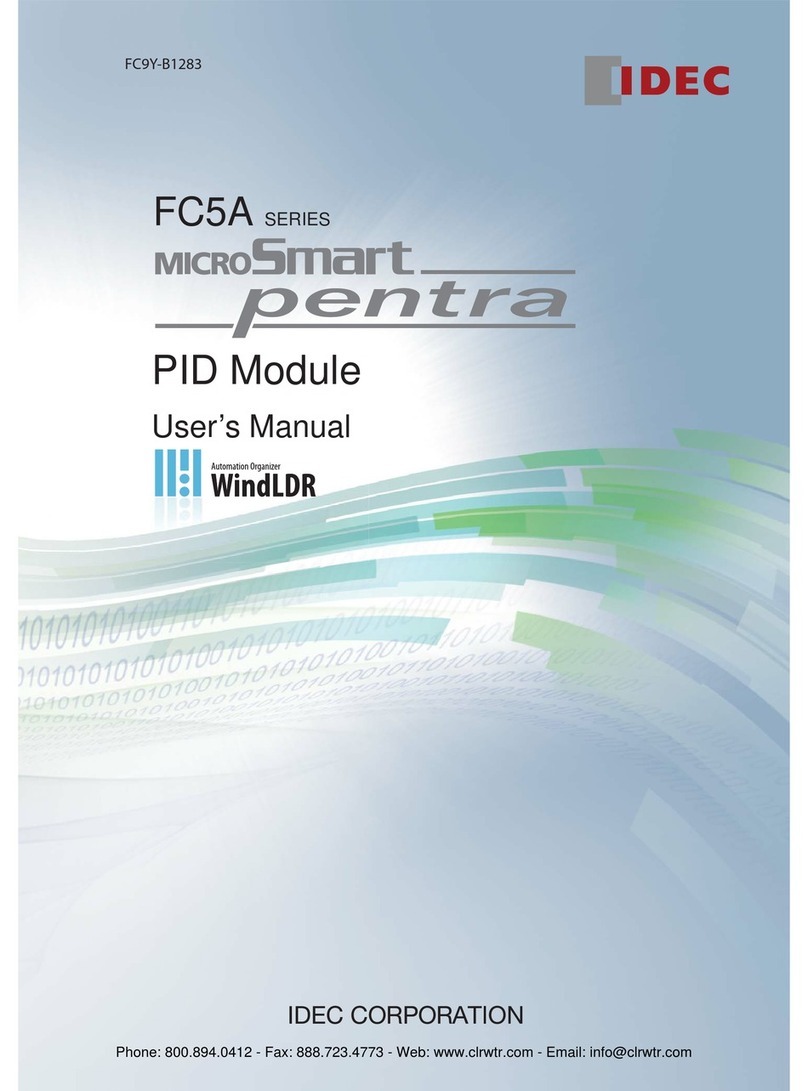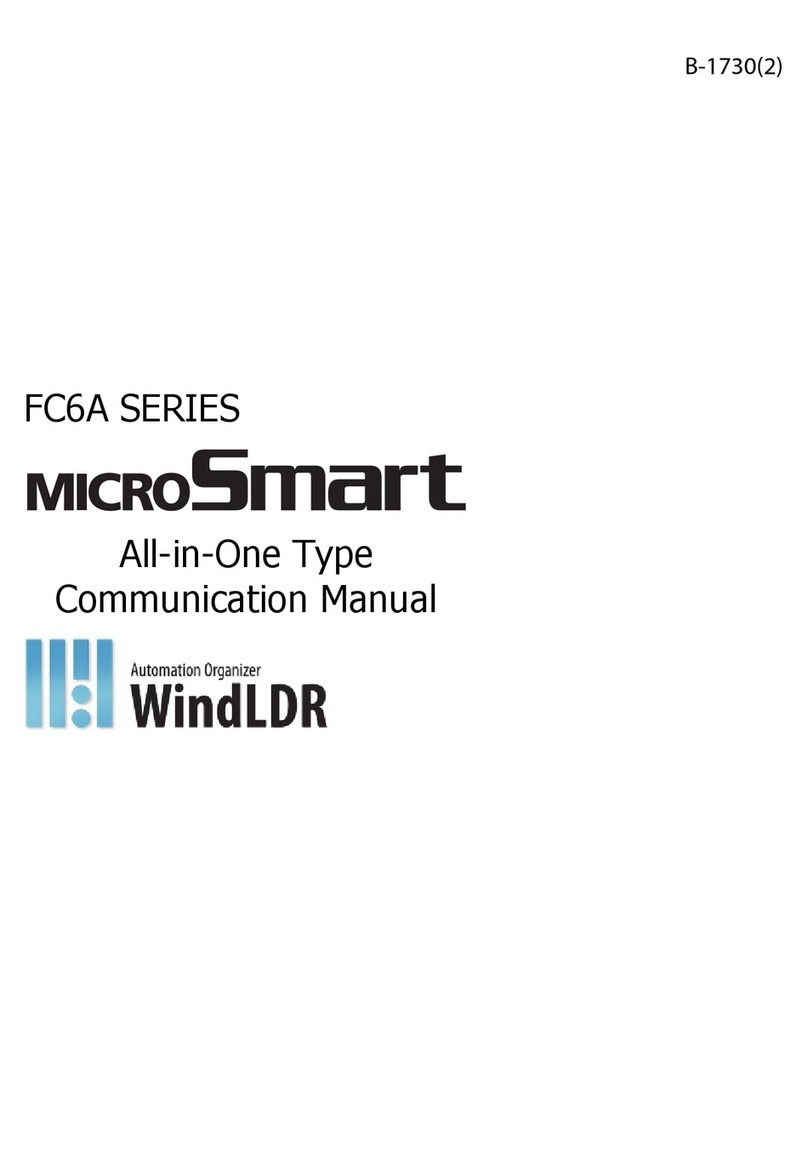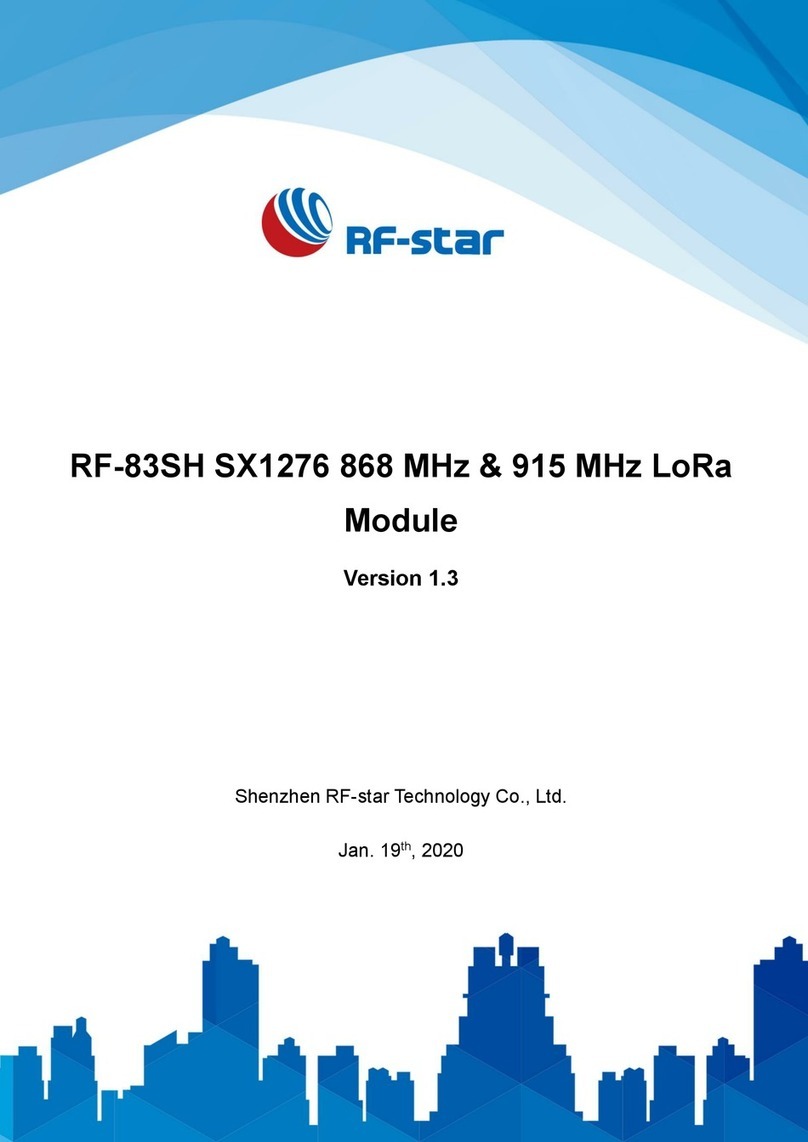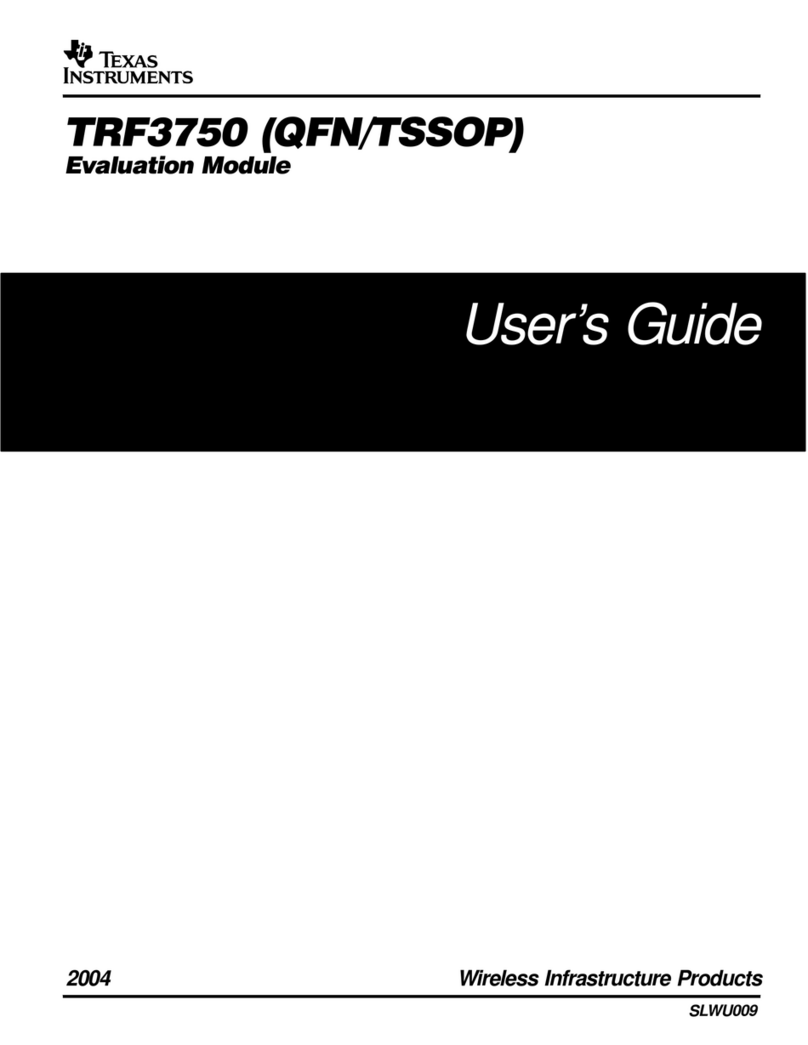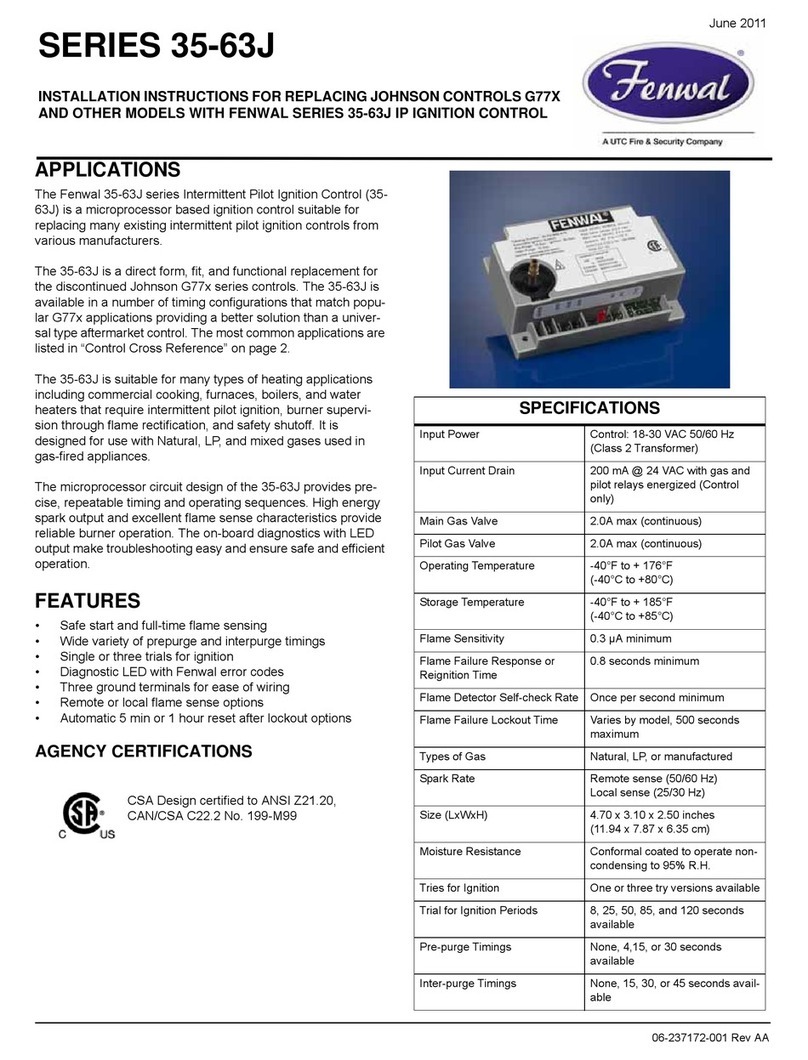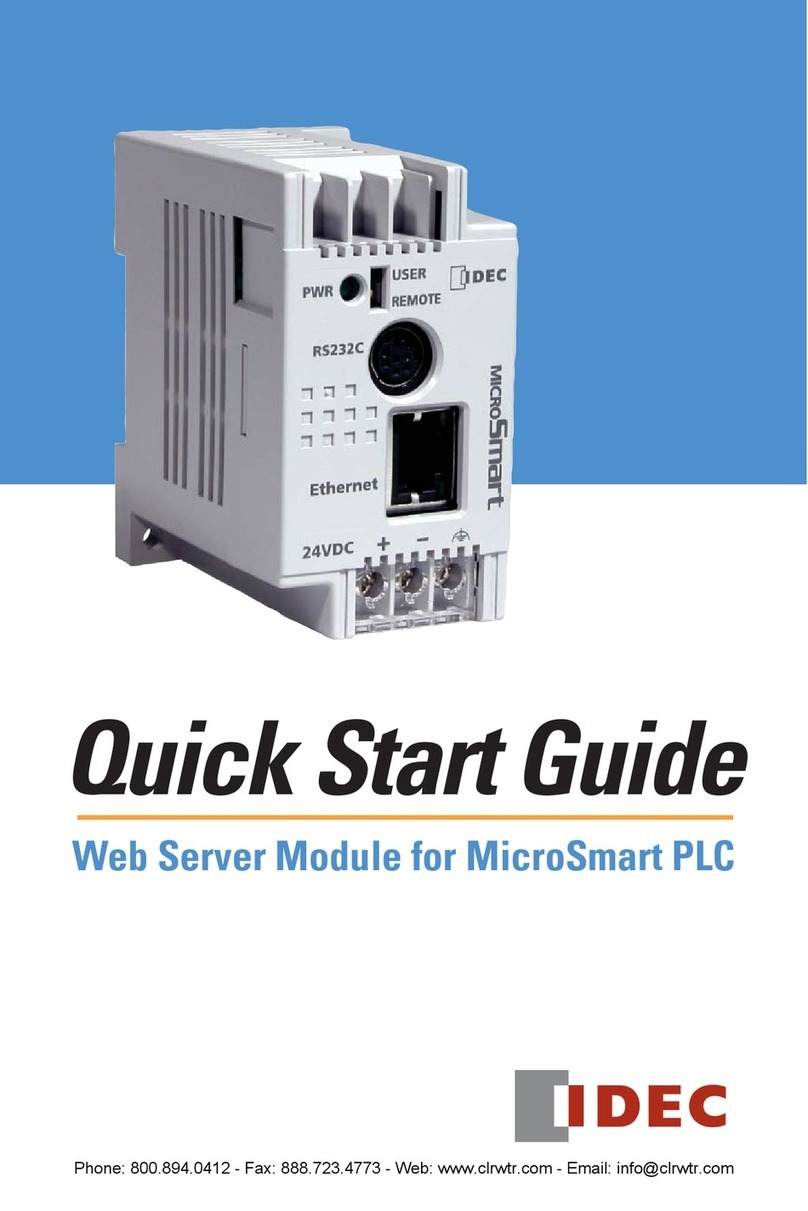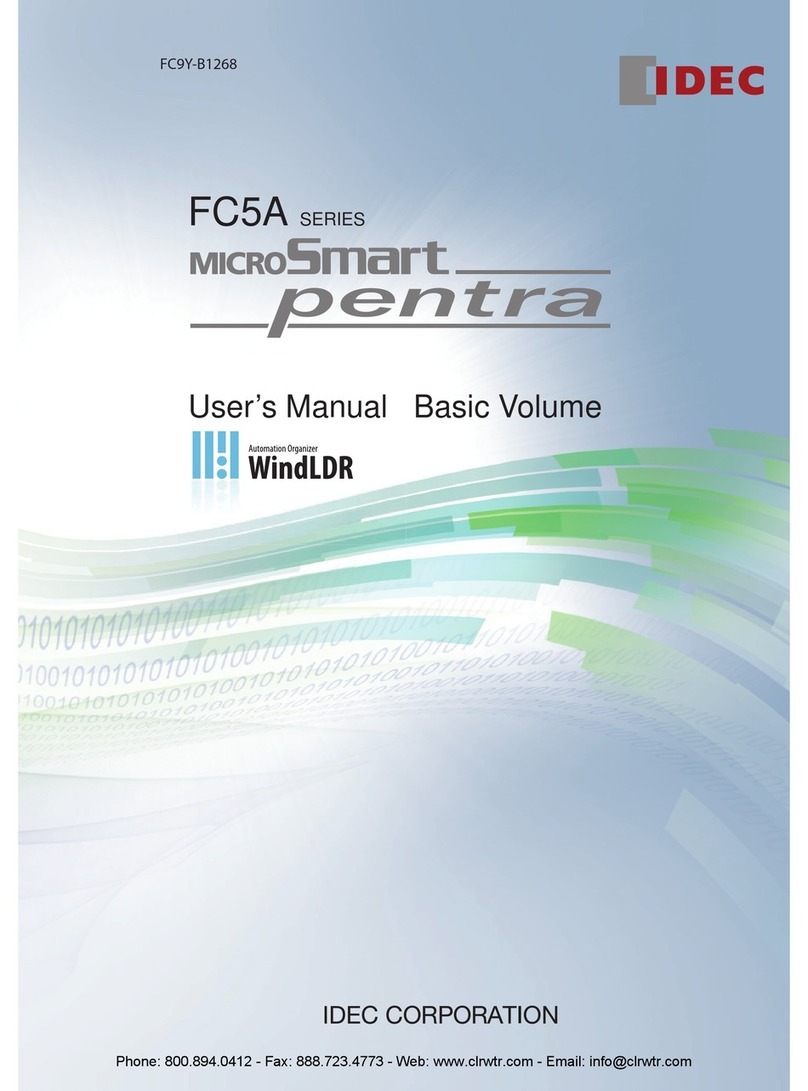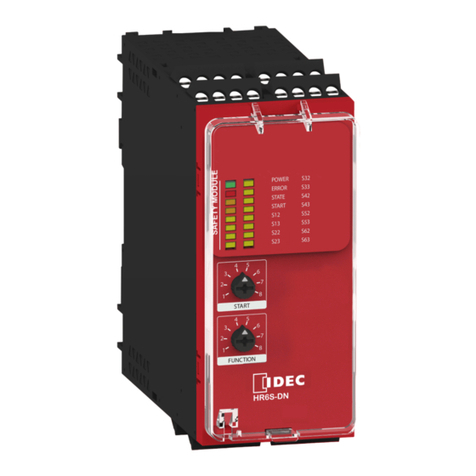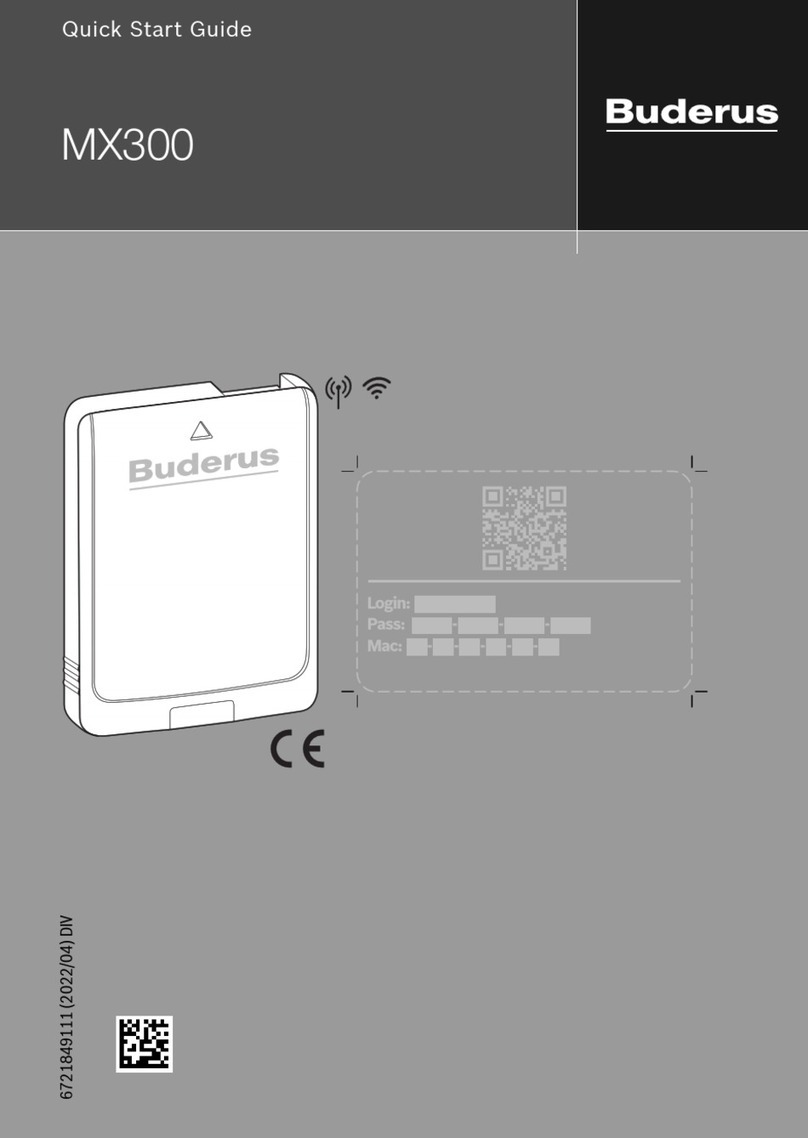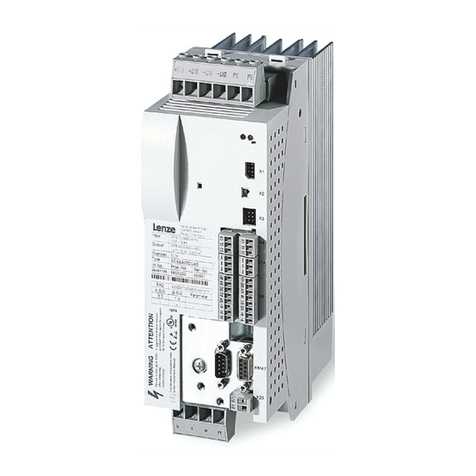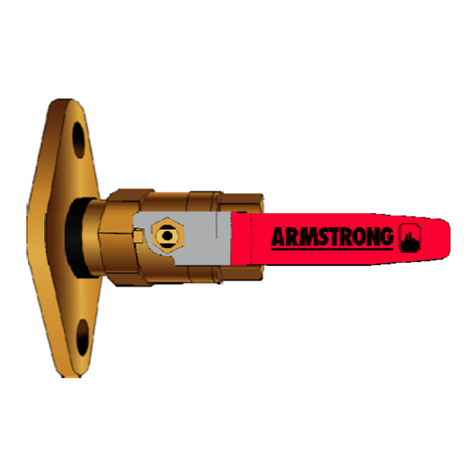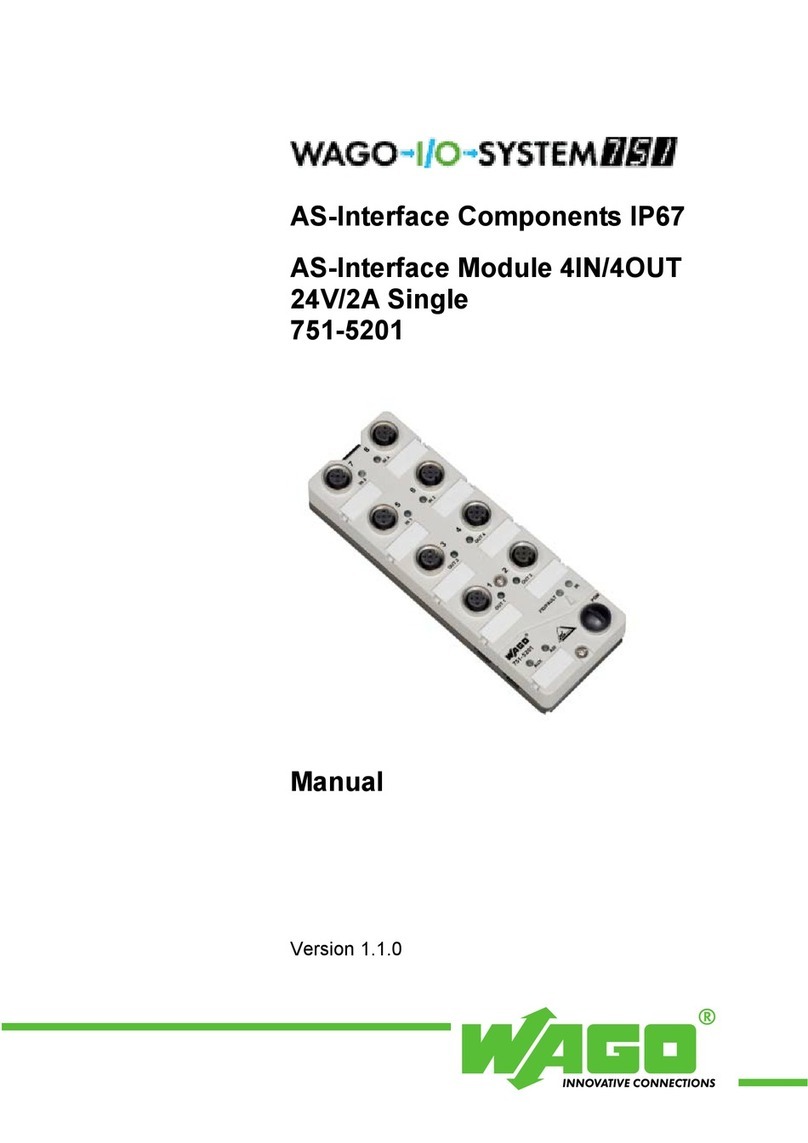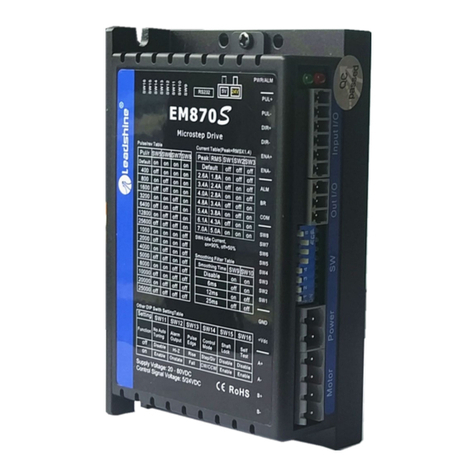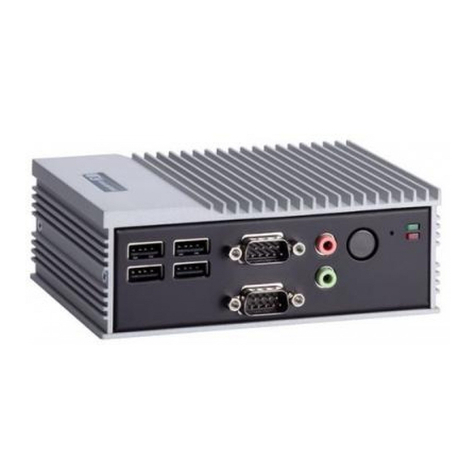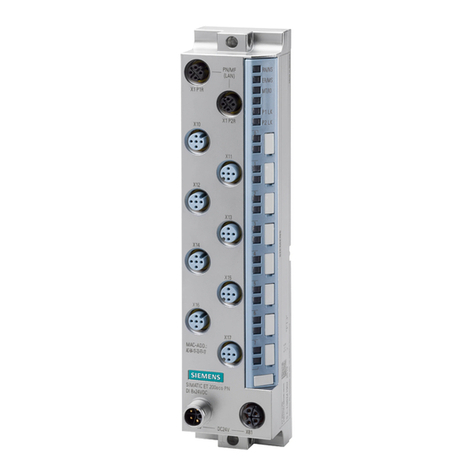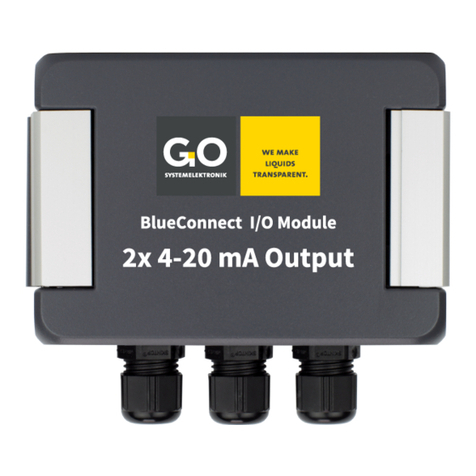
18 / 18
L'appareil est aussi capable de commuter des
charges faibles (17 V / 10 mA), à condition
que le contact n'ait jamais commuté de forte
charge auparavant, car la couche d'or revêtant le
contact pourrait être altérée.
- Résistivité dans l'alimentation des
actionneurs: max. 33 Ω
Minimum switching ratings of outputs:
The device is capable to switch low voltage loads
(min. 17 V / 10 mA) provided that the contact
has never been used with higher loads.
- Resistance in the voltage supply to the
sensors: max. 33 Ω
Das Gerät ist ebenfalls zum Schalten von Kleinstlasten
(min. 17 V / 10 mA) geeignet. Dies ist jedoch nur
dann möglich, wenn bisher über diesen Kontakt keine
höheren Lasten geschaltet wurden, da hierdurch die
Kontaktvergoldung abgebrannt sein könnte.
- Leitungswiderstand in der Spannungsversorgung
der Befehlsgeber: max. 33 Ω
DÉCLARATION CE DE CONFORMITÉ
POUR LES COMPOSANTS DE SÉCURITÉ
(Traduction française de la Déclaration CE de Conformité
d'origine Référence du document : D1B112, D2B126, D3B026)
Nous: IDEC CORPORATION
7-31, Nishimiyahara 1-chome, Yodogawa-ku, Osaka 532-8550, Japan
Déclarons que le composant de sécurité
MARQUE: IDEC
NOM, TYPE: Modules de sécurité
MODELES: HR1S-ATE
NUMÉRO DE SÉRIE: voir de la Déclaration CE de Conformité d'origine
DATE DE FABRICATION: voir plaque signalétique
est conforme à l'ensemble des recommandations en matière de protection
stipulées dans les consignes suivantes.
Une description de la Déclaration avec les normes européennes
harmonisées est fournie ci-après.:
L'organisme agréé suivant a établi une déclaration positive selon le Chapitre
7, phrase 2, 2004/108/EG:
Sous réserve d’installation, d’entretien et d’utilisation conformes à sa
destination, à la réglementation, aux normes en vigueur, aux instructions du
constructeur et aux règles de l’art.
EC DECLARATION OF CONFORMITY
FOR SAFETY COMPONENTS
(Copy of the original EC declaration of conformity,
Document-no.: D1B112, D2B126, D3B026)
WE: IDEC CORPORATION
7-31, Nishimiyahara 1-chome, Yodogawa-ku, Osaka 532-8550, Japan
hereby declare that the safety component
TRADEMARK: IDEC
PRODUCT, TYPE: Safety relay module
MODELS: HR1S-ATE
SERIAL NUMBER: refer to original EC declaration of conformity
DATE OF MANUFACTURING: refer to device nameplate
all the essential protection requirements that are described in the following
directives are defined, corresponding.
Furthermore, the conformity with the following harmonized European
standards explained:
EG-KONFORMITÄTSERKLÄRUNG
FÜR SICHERHEITSBAUTEILE
(Deutsch übersetzung der original EG-Konformitätserklärung,
Dokument-Nr.: D1B112, D2B126, D3B026)
WIR: IDEC CORPORATION
7-31, Nishimiyahara 1-chome, Yodogawa-ku, Osaka 532-8550, Japan
erklären hiermit, daß das nachstehend aufgeführte Sicherheitsbauteil
MARKE: IDEC
NAME, TYP: Sicherheitsrelais
MODELL: HR1S-ATE
SERIENNNUMMER:siehe original EG-Konformitätserklärung
FERTIGUNGSDATUM: siehe Typenschild
allen wesentlichen Schutzanforderungen, die in den nachfolgenden
bezeichneten Richtlinien festgelegt sind, entspricht.
Weiterhin wird die Konformität mit folgenden harmonisierten Europäischen
Normen erklärt:
DATE DE RÉFÉRENCE: DIRECTIVE:
EN 60204-01:2006
(DIN EN 60204-01:2007-06)
DIRECTIVE 2006/95/CE DU
PARLEMENT EUROPÉEN ET DU
CONSEIL du 12 décembre 2006
concernant le rapprochement des
législations des États membres relatives
au matériel électrique destiné à être
employé dans certaines limites de tension
EN 60947-5-1:2004
(DIN EN 60947-5-1:2005-02)
EN 60947-01:2007
(DIN EN 60947-01:2008-04)
EN 60947-01:2007
(DIN EN 60947-01:2008-04)
DIRECTIVE 2004/108/CE DU
PARLEMENT EUROPÉEN ET DU
CONSEIL du 15 décembre 2004
relative au rapprochement des
législations des États membres
concernant la compatibilité
électromagnétique et abrogeant la
directive 89/336/CEE
EN 61000-6-02:2005
(DIN EN 61000-6-2:2006-03)
EN 61000-6-4:2007
(DIN EN 61000-6-4:2007-09)
EN 60947-5-1:2004
(DIN EN 60947-5-1:2005-02)
EN 62061:2005
(DIN EN 62061:2005-10) DIRECTIVE 2006/42/CE DU
PARLEMENT EUROPÉEN ET DU
CONSEIL du 17 mai 2006
relative aux machines et modifiant la
directive 95/16/CE (refonte)
EN ISO 12100-2:2003
(DIN EN ISO 12100-2:2004-04)
EN ISO 13849-1:2008
(DIN EN ISO 13849-01:2008-12)
EN ISO 13849-2:2008
(DIN EN ISO 13849-2:2008-09)
RÉFÉRENCE DE
L'ORGANISME AGRÉÉ:
REFERENCE DE LA
DECLARATION:
NOM, ADRESSE:
0044 44 205 10 380862 - 0014 TÜV NORDCERTGMBH
Langemarckstr. 20
D-45141 Essen
DATED REFERENCE: DIRECTIVE:
EN 60204-01:2006
(DIN EN 60204-01:2007-06)
DIRECTIVE 2006/95/EC OF THE
EUROPEAN PARLIAMENT AND OF
THE COUNCIL of 12 December 2006
on the harmonisation of the laws of
Member States relating to electrical
equipment designed for use within
certain voltage limits
EN 60947-5-1:2004
(DIN EN 60947-5-1:2005-02)
EN 60947-01:2007
(DIN EN 60947-01:2008-04)
DATIERTE FUNDSTELLE: RICHTLINIENBEZUG:
EN 60204-01:2006
(DIN EN 60204-01:2007-06)
RICHTLINIE 2006/95/EG DES
EUROPÄISCHEN PARLAMENTS UND
DES RATES vom 12. Dezember 2006
zur Angleichung der Rechtsvorschriften der
Mitgliedstaaten betreffend elektrische
Betriebsmittel zur Verwendung innerhalb
bestimmter Spannungsgrenzen
EN 60947-5-1:2004
(DIN EN 60947-5-1:2005-02)
EN 60947-01:2007
(DIN EN 60947-01:2008-04)
HR1S-ATE SAFETY RELAY MODULE OPERATING INSTRUCTIONS
The following notified body has made a positive declaration in accordance
to Chapter 7, Sentence 2, 2004/108/EG:
Itis important that the safetycomponent is subject to correct installation, maintenance
and use conforming to its intended purpose, to the applicable regulations and
standards, to the supplier’s instructions and to accepted rules of the art.
Documentation authority:
Frank Lisker/ IDEC ELEKTROTECHNIK GmbH
Wendenstrasse 331, D-20537 Hamburg, Germany
EN 60947-01:2007
(DIN EN 60947-01:2008-04)
DIRECTIVE 2004/108/EC OF THE
EUROPEAN PARLIAMENT AND OF
THE COUNCIL of 15 December 2004
on the approximation of the laws of the
Member States relating to
electromagnetic compatibility and
repealing Directive 89/336/EEC
EN 61000-6-02:2005
(DIN EN 61000-6-2:2006-03)
EN 61000-6-4:2007
(DIN EN 61000-6-4:2007-09)
EN 60947-5-1:2004
(DIN EN 60947-5-1:2005-02)
EN 62061:2005
(DIN EN 62061:2005-10)
DIRECTIVE 2006/42/EC OF THE
EUROPEAN PARLIAMENT AND OF
THE COUNCIL of 17 May 2006
on machinery, and amending Directive
95/16/EC (recast)
EN ISO 12100-2:2003
(DIN EN ISO 12100-2:2004-04)
EN ISO 13849-1:2008
(DIN EN ISO 13849-01:2008-12)
EN ISO 13849-2:2008
(DIN EN ISO 13849-2:2008-09)
NUMBER OF THE
NOTIFIED BODY:
NUMBER OF
DECLARATION:
NAME, ADDRESS:
0044 44 205 10 380862 - 0014 TÜV NORDCERTGMBH
Langemarckstr. 20
D-45141 Essen
7-31, Nishimiyahara 1-chome, Yodogawa-ku, Osaka 532-8550, Japan
12 - March – 2010
IDEC CORPORATION
Documentation autorité:
Frank Lisker/ IDEC ELEKTROTECHNIK GmbH
Wendenstrasse 331, D-20537 Hamburg, Germany
7-31, Nishimiyahara 1-chome, Yodogawa-ku, Osaka 532-8550, Japan
12 - Mars – 2010
IDEC CORPORATION
Folgende benannte Stelle hat eine positive Erklärung im Sinne des Artikels
7, Satz 2, 2004/108/EG ausgestellt:
Falls es gemäß seiner Bestimmung, den geltenden Vorschriften, Normen
und Herstelleranweisungen entsprechend installiert, verwendet und
gewartet wird.
Dokumentations Bevollmächtigter:
EN 60947-01:2007
(DIN EN 60947-01:2008-04)
RICHTLINIE 2004/108/EG DES
EUROPÄISCHEN PARLAMENTS UND
DES RATES vom 15. Dezember 2004
zur Angleichung der Rechtsvorschriften
der Mitgliedstaaten über die
elektromagnetische Verträglichkeit und
zur Aufhebung der Richtlinie 89/336/
EWG
EN 61000-6-02:2005
(DIN EN 61000-6-2:2006-03)
EN 61000-6-4:2007
(DIN EN 61000-6-4:2007-09)
EN 60947-5-1:2004
(DIN EN 60947-5-1:2005-02)
EN 62061:2005
(DIN EN 62061:2005-10)
RICHTLINIE 2006/42/EG DES
EUROPÄISCHEN PARLAMENTS UND
DES RATES vom 17. Mai 2006
über Maschinen und zur Änderung der
Richtlinie 95/16/EG (Neufassung)
EN ISO 12100-2:2003
(DIN EN ISO 12100-2:2004-04)
EN ISO 13849-1:2008
(DIN EN ISO 13849-01:2008-12)
EN ISO 13849-2:2008
(DIN EN ISO 13849-2:2008-09)
KENNNUMMER DER
BENANNTEN STELLE:
NUMMER DER
ERKLÄRUNG:
NAME, ANSCHRIFT:
0044 44 205 10 380862 - 0014 TÜV NORDCERTGMBH
Langemarckstr. 20
D-45141 Essen
Frank Lisker/ IDEC ELEKTROTECHNIK GmbH
Wendenstrasse 331, D-20537 Hamburg, Germany
7-31, Nishimiyahara 1-chome, Yodogawa-ku, Osaka 532-8550, Japan
12 - März – 2010
IDEC CORPORATION
EN ISO 13850:2008
(DIN EN ISO 13850:2009-08) EN ISO 13850:2008
(DIN EN ISO 13850:2009-08)
EN ISO 13850:2008
(DIN EN ISO 13850:2009-08)
If you need the original EC declaration of conformity, please offer to our sales
person or agency.
Si vous avez besoin de la d
é
claration CE de conformit
é
originale, veuillez vous
adresser
à
notre responsable des ventes ou agence.
Wenn Sie die originale EG-konformit
ä
tserkl
ä
rung brauchen, bieten Sie sich bitte
zu unserer Verkaufsperson oder unserer Agentur.


















